七律 逰览四川成都青城山感怀

七律•逰览四川成都青城山感怀
蒲文强
2021年7月24日
盛夏游历凉爽透,
漫山遍野绿油油。
道教圣地[1]幽深处,
天人合一通宇宙。
轩辕皇帝封圣名[2] ,
五岳丈人[3]青城留。
丹梯千级[4]张天师[5] ,
结茅传道[6]五洞遊 。
飞瀑渊潭[7]深千尺,
曲桥栈道[8]天外秀。
建福宫[9]傍天师洞[10] ,
金娃娃沱[11]泉雾吼。
注释:
[1] 四川成都青城山是道教圣地, 主要道观有:常道观(天师洞)、祖师殿、上清宫、老君阁、建福宫、圆明宫、玉清宫等。
[2] 相传轩辕黄帝时有宁封子居青城山修道,曾向黄帝传授御风云的“龙跻之术。
[3] 轩辕黄帝筑坛拜青城山为“五岳丈人”,故后世又称青城山为丈人山。
[4] 青城山遍布石梯台堦,老君阁位于青城第一峰绝顶(即彭祖峰顶,或称高台山、老霄顶),海拔高约1260米,顶上原有呼应亭,取“登高一呼,众山皆应”之意。若攀爬上此顶, 必拾千级台䃈梯而上。
[5] 奠定青城山为道教名山地位的是张道陵。东汉顺帝初年,张道陵入鹤鸣山(今成都市大邑县境内)修道,创立五斗米道,亦即天师道。东汉汉安二年(143),在写毕二十四道书两年后,张道陵到达青城山,在此结茅传道,并羽化山中。
[6] 东汉顺帝汉安二年(143年),“天师”张陵来到青城山,看中青城山的深幽涵碧,便在此结茅传道,青城山遂成为道教的发祥地之一,被道教列为“第五洞天”。
[7] 青城山乃圣秀水, 钟灵毓秀. 遍布山区中的飞瀑渊潭, 四处可见.
[8] 青城山以曲桥栈道方式连接境点通道, 高悬岩石峰间, 扣人心眩.
[9] 建福宫在青城山麓丈人峰下,传为五岳丈人宁封子修道处。原名丈人祠,唐开元十八年(730年)始建,祀奉宁封子。宋淳熙二年(1175年)赐名会庆建福宫,简称现名,清光绪十四年(1888年)重建。
[10] 全国道教重点宫观和青城山道教协会所在地,也称古常道观。天师洞位于青城山半腰。初名延庆观,隋大业年间(605—618年)始建,唐改称常道观。观后天师洞传为张道陵修炼处。唐孙思邈、杜光庭相继来此修道。
[11] 金娃娃沱位于青城后山,古称蛮河,全长8公里,因传说古时有五条神龙,隐于沟中而得名。溯沟而上,峰峦叠嶂,岩耸谷深。苍峰壑间,有神秘莫测的金娃娃沱,景色绝佳的龙隐峡栈道,韵味无穷的石笋岩、回音壁,以及蔚为壮观的五龙抢宝、白龙吐雾。


Seven laws • feelings of visiting Qingcheng Mountain in Chengdu, Sichuan
Pu Wenqiang
July 24, 2021
It's cool to travel in midsummer,
The mountains are green.
In the secluded depths of the Taoist holy land,
The unity of heaven and man connects the universe.
Emperor Xuanyuan granted the holy name [2],
The father-in-law of the five mountains [3] stayed in Qingcheng.
Danti thousand [4] Zhang Tianshi [5],
Jiemao mission [6] five hole tour.
The waterfall and deep pool [7] are thousands of feet deep,
Curved bridge plank road [8] tianwaixiu.
Jianfu palace [9] next to Tianshi cave [10],
Golden Doll Tuo [11] spring fog roars.
notes:
[1] Qingcheng Mountain in Chengdu, Sichuan Province is a holy land of Taoism. The main Taoist temples include Changdao Temple (Tianshi cave), ancestral hall, Shangqing palace, Laojun Pavilion, Jianfu palace, Yuanming palace, Yuqing palace, etc.
[2] It is said that when Xuanyuan was the Yellow Emperor, Ning Fengzi lived in Qingcheng Mountain to cultivate Taoism. He once taught the Yellow Emperor the art of "dragon among the clouds".
[3] Xuanyuan yellow emperor built an altar and worshipped Qingcheng Mountain as "father-in-law of the five mountains", so later generations also called Qingcheng Mountain as father-in-law mountain.
[4] Qingcheng Mountain is covered with stone terraces. Laojun Pavilion is located at the top of the first peak of Qingcheng (i.e. Pengzu peak, or Gaotai mountain and Laoxiao top). The altitude is about 1260 meters. There is an original echo Pavilion on the top, which means "when you climb up, all mountains should respond". If you climb to this top, you must climb up ten thousand steps.
[5] It was Zhang Daoling who established Qingcheng Mountain as a famous Taoist mountain. In the early years of Emperor Shun of the Eastern Han Dynasty, Zhang Daoling entered Heming mountain (today's Dayi County, Chengdu) to cultivate Taoism and founded wudoumi Dao, also known as Tianshi Dao. In the second year of Han'an in the Eastern Han Dynasty (143), two years after writing the twenty-four Taoist books, Zhang Daoling arrived at Qingcheng Mountain, where he preached and emerged into the mountain.
[6] In the second year of Han'an, Emperor Shun of the Eastern Han Dynasty (143), Zhang Ling, the "Heavenly Master", came to Qingcheng Mountain. He liked the deep and beautiful nature of Qingcheng Mountain and preached here. Qingcheng Mountain became one of the birthplaces of Taoism and was listed as "the fifth cave sky" by Taoism.
[7] Qingcheng Mountain is a holy and beautiful water. It is surrounded by waterfalls and deep pools in the mountains
[8] Qingcheng Mountain connects the boundary point channel by means of curved bridge and plank road, hanging between rock peaks, which makes people dizzy
[9] Jianfu palace is located at the foot of the father-in-law peak at the foot of Qingcheng Mountain. It is said that the father-in-law of the five mountains is Ning Fengzi's monastic office. Originally known as the ancestral hall of father-in-law, it was built in the 18th year of Kaiyuan of the Tang Dynasty (730) to worship Ning Fengzi. In the second year of Chunxi of Song Dynasty (1175), it was named Huiqing Jianfu palace, which was rebuilt in the 14th year of Guangxu of Qing Dynasty (1888).
[10] The national key Taoist temples and Qingcheng Mountain Taoist Association are also called ancient Taoist temples. Tianshi cave is located in the middle of Qingcheng Mountain. It was originally named Yanqing temple. It was built during the great cause of the Sui Dynasty (605-618). It was renamed Changdao temple in the Tang Dynasty. After the temple, Tianshi cave is said to be the cultivation place of Zhang Daoling. Tang Sun Simiao and Du Guangting came here one after another to practice Taoism.
[11] Jinhuahuatuo is located in the back mountain of Qingcheng. It was called manhe River in ancient times, with a total length of 8 kilometers. It is named because it is said that there were five divine dragons hidden in the ditch in ancient times. Up the gully, there are overlapping peaks, towering rocks and deep valleys. Between Cangfeng and gully, there are mysterious Golden Doll Tuo, Longyin gorge plank road with excellent scenery, stalagmite rock and echo wall with infinite charm, as well as spectacular five dragons robbing treasure and white dragons spitting fog.





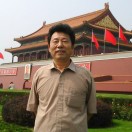
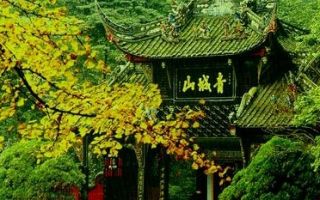
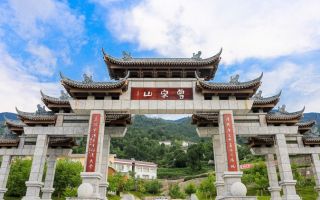
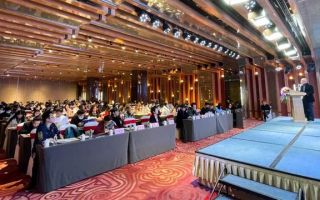
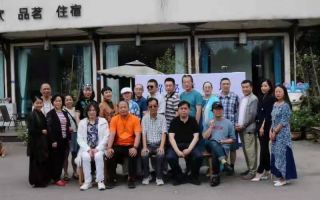
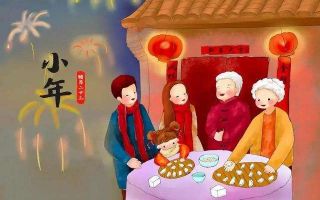
蒲文强